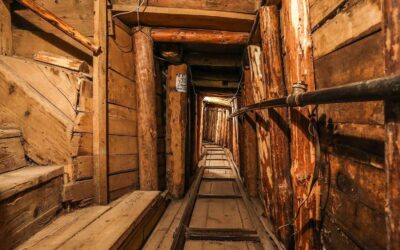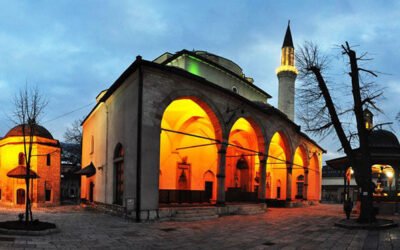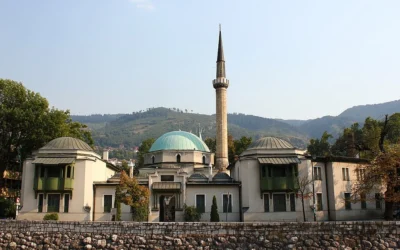Aladža Mosque
Aladža Mosque
- The Aladža Mosque also known as the “Colorful Mosque”, is an Ottoman era Musjid that was built in 1549 and located in Foča, Bosnia and Herzegovina. It is considered one of the most beautiful and important examples of Ottoman architecture in Europe, and is one of the most important Ottoman era Musjids in all of Bosnia and Herzegovina; along with the Gazi Husrev-beg Mosque in Sarajevo and the Ferhadija Mosque in Banja Luka. It was completely destroyed with pre-planted explosives at the beginning of the Bosnian War in 1992 by the VRS, and levelled to the ground; along with the left over stones and rubble from the Musjid being hidden all over Foča to prevent its reconstruction. After many years of searching for the stones once the Bosniak refugees of Foča began to return, and sourcing the funds necessary for the reconstruction of the Musjid, its reconstruction was started in 2016, and completed in 2018.
- The Musjid was erected in 1549 by Hasan Nezir, the Ottoman Persian supervisor of state goods and finance in Bosnia and a close associate of Mimar Sinan. The master builder was Ramadan-aga, who was trained in the Persian culture and Persian architecture. It was decorated with beautiful colors, so it was named Aladža, “the Colorful”.
- During the Ottoman period, 17 Musjids were built in Foča; 5 were destroyed during World War II and 12 were destroyed during the War in Bosnia and Herzegovina. From April to June 1992, all mosques were demolished in Foča.
- The Musjid was blown up on 22 April 1992 by the Army of Republika Srpska and then completely demolished on 2 August 1992. Its remains were removed to the city’s landfills. The area on which the mosque stood has been fenced and remained empty for the following 22 years. The first fragments of Aladža were found in 2004, along with the remains of the bodies of killed Bosniaks, in the rubble around 200 m south of the iron bridge over the Drina and around 300 m north of this bridge.
- In October 2018, the Bosnian State Court charged Goran Mojović for crimes against humanity, including the destruction of the Aladža Musjid. According to the prosecutor, in the course of a widespread and systematic attack by the Bosnian Serb military, paramilitary and police forces against the civilian population of the city of Foča, on the evening of August 2, 1992 Mojović, as head of the local engineering unit of the Army of Republika Srpska, gave the order to destroy the mosque, and – despite the refusal of two other soldiers – together with Rajko Milošević detonated the Musjid with about 25 anti-tank mines. Thus Mojović and Milošević violated international law on the protection of civilian and cultural property.
- The reconstruction of the Musjid in line with the original plans was carried out between 2014 and 2018 under supervision of the Commission to preserve national monuments of Bosnia and Herzegovina. It was financed by the Turkish Cooperation (TIKA). The restored Aladža was opened on May 4, 2019, and was opened by Aziza Kurtović, a woman who lost her son during the war.





